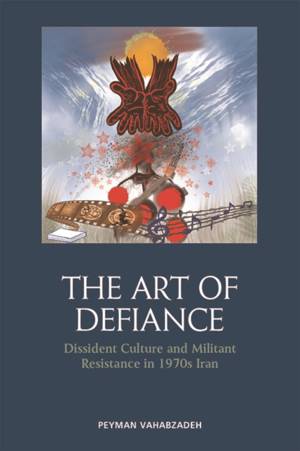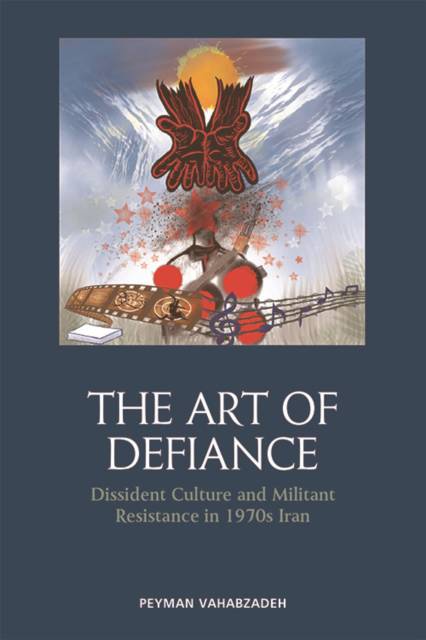
- Retrait gratuit dans votre magasin Club
- 7.000.000 titres dans notre catalogue
- Payer en toute sécurité
- Toujours un magasin près de chez vous
- Retrait gratuit dans votre magasin Club
- 7.000.0000 titres dans notre catalogue
- Payer en toute sécurité
- Toujours un magasin près de chez vous
The Art of Defiance
Dissident Culture and Militant Resistance in 1970s Iran
Peyman VahabzadehDescription
At a time of growing state control, censorship and wholesale crackdown on opposition in post-1953 Iran, intellectuals and artists began to produce works that defied the Shah's dictatorship and the regime's "Great Civilisation" propaganda. With the emergence of urban guerrilla warfare in 1971, dissident artists - spearheaded by Marxist People's Fadai Guerrillas (PFG) - created symbolic works that popularised the militants' ideas through artistic depictions and tropes, while portraying the militants as immortal freedom-fighters. The arts of defiance thus swayed young educated Iranians, as well as certain layers of the public, to perceive the state through the eyes of its most radical critiques: militant dissidents.
By closely examining and interpreting the poetry, fiction, songs and films of the 1960s and 1970s, this book uncovers how militant action was translated into artistic expressions and vice versa. It also explores how the PFG militants - who were few in number - were able to acquire a 'heroic' dimension in the eyes of the public, portraying a symbolic image of defiance far beyond their actual militant existence.
Spécifications
Parties prenantes
- Auteur(s) :
- Editeur:
Contenu
- Nombre de pages :
- 344
- Langue:
- Anglais
Caractéristiques
- EAN:
- 9781474492225
- Date de parution :
- 08-03-22
- Format:
- Livre relié
- Format numérique:
- Genaaid
- Dimensions :
- 156 mm x 234 mm
- Poids :
- 666 g

Les avis
Nous publions uniquement les avis qui respectent les conditions requises. Consultez nos conditions pour les avis.






